May 3, 2013 | design
Genis Carreras is a Catalan graphic designer whose latest project turns whole complicated concepts into minimalist designs. He breaks down the essence of what ideas mean, and reinterprets them in bright colors, calling the series philographics. It began as a set of 24 posters, “But so many important ‘isms’ were left out that I decided to add more designs to the collection,” he said. So far he’s created 95 different designs after spending the past six months immersed in the project in his London studio.
He’s turning the designs into a book and a postcard set, using Kickstarter to fund their creation. He needed £15,000 for the project, and has already reached £40,721 after starting funding just a little over a week ago.
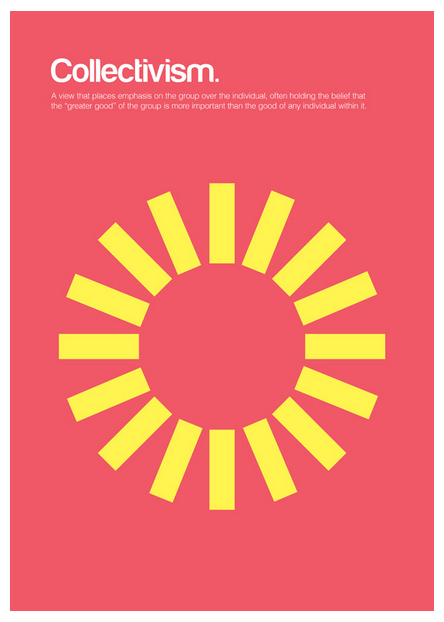
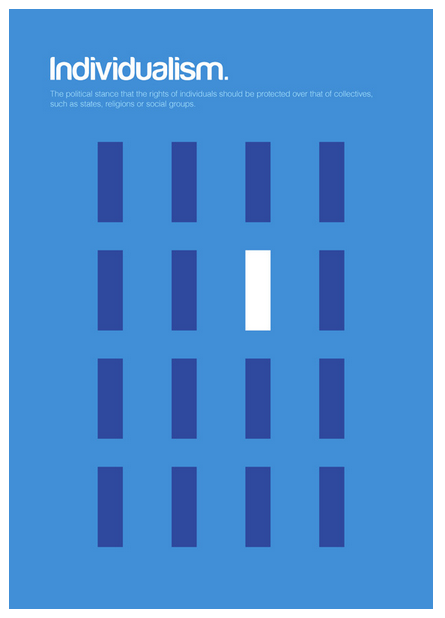
Each design includes a simple definition of the philosophy it represents, written by Chris Thomas. Each uses a bright background color topped with simple, often symmetrical shapes that interact with each other to embody concepts that can be difficult to grasp.
The designs don’t reduce the concepts, they make them beautiful and understandable, transforming centuries of theoretical debate and discussion into colors and shapes that effortlessly explain everything.

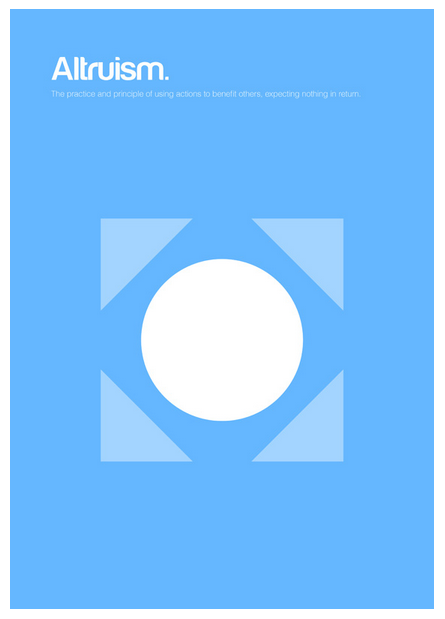
Only 25, Genis said he wants philographics to serve as a “visual dictionary of philosophy,” and previously he’s designed posters, websites, icons, album covers and more. He also made this really cool portrait of Steve Jobs out of Macbook parts with Ben Redford at Mint Digital. Philographics will be his second self-published book after writing and designing Colouring our Perceptions, a book that examines how color effects communication.
His Kickstarter profile reads:
“I love things like simplicity, books, modernism, video games, nature, London and beagles. And beer, I love beer too.”
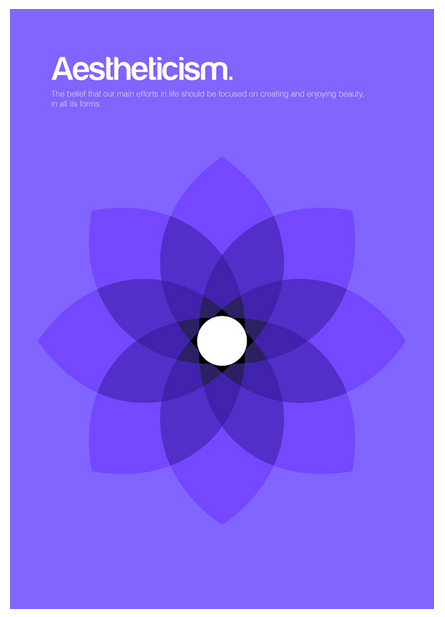
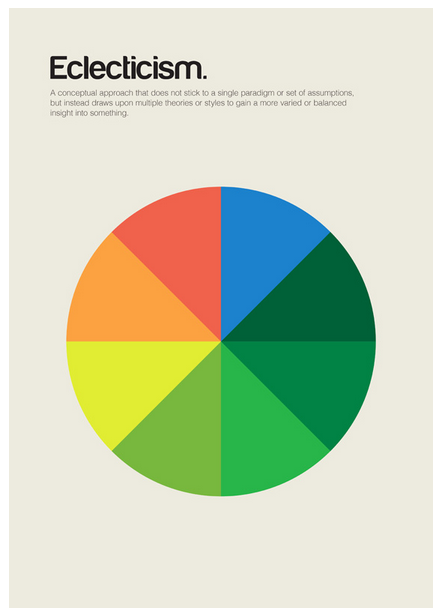
For more about Genis and his work, see his website, his Kickstarter project page, and his print shop.
GD Star Rating
loading...
May 2, 2013 | apropos//ts, art about
The other night I started perusing new apps on my iPhone, and then I looked up and an hour had gone by. I don’t know how technology does it, but it’s so useful and sleek I can’t help myself. “Yes I would like organize my passwords!” “Live tv on my phone all the time? Have to have it.”
Technology is really spoiling us, and we tricked ourselves into thinking we deserve it because somewhere out there someone’s father invented it for us. Which is why it’s such a paradox that nostalgia is so in now – we probably couldn’t survive one hour without our little tethers to the universe in our smart phones, but somehow we pine for the 90s and love tv shows like Mad Men and movies like Django.
I think it’s because we’re worried about preserving the time before technology for those who won’t remember it. I’m 21 and I barely remember it, so my kids probably won’t even know what it’s like to have a car that won’t talk or maybe drive itself even. Do you think we’ll still teach our kids to drive, and will they teach theirs? Probably not, and that blows my mind.
Below you’ll find six artworks that visualize this bond that’s forming between people and our technology. They warn of dependency, surrounding us with screens and transforming us into them in amazing ways.
1. Ernst Caramelle, Video
Landscapes (1974)
[zl_mate_code name=”Orange Dynamic” label=”3″ count=”1″ who=”div” text=”Even in 1974, television was inside our heads and here a man sits with his head behind one, his face shining through the screen.”]
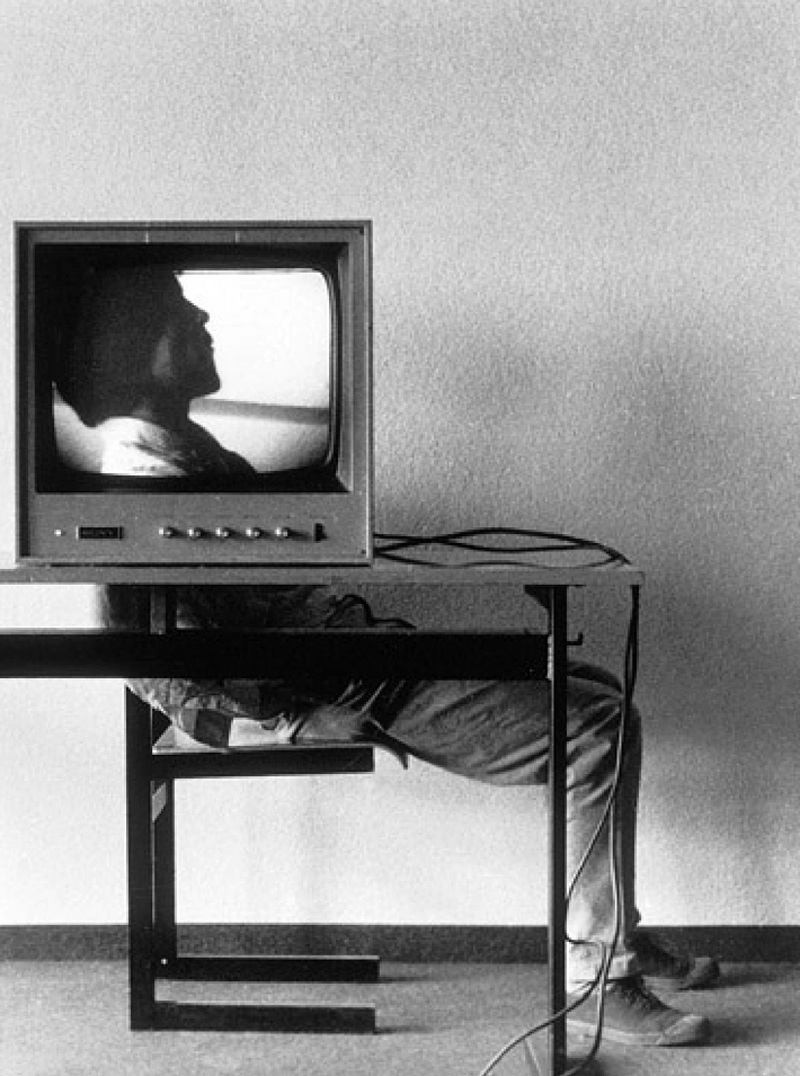
[/zl_mate_code] Source: polychronidis.tumblr.com
2. Kelley McMorris, Deeper
Understanding
[zl_mate_code name=”Pink Dynamic” label=”1″ count=”1″ who=”div” text=”A white ghost hand emerges from each screen, enveloping the girl whose fingers interlace with the hand in her laptop.”]
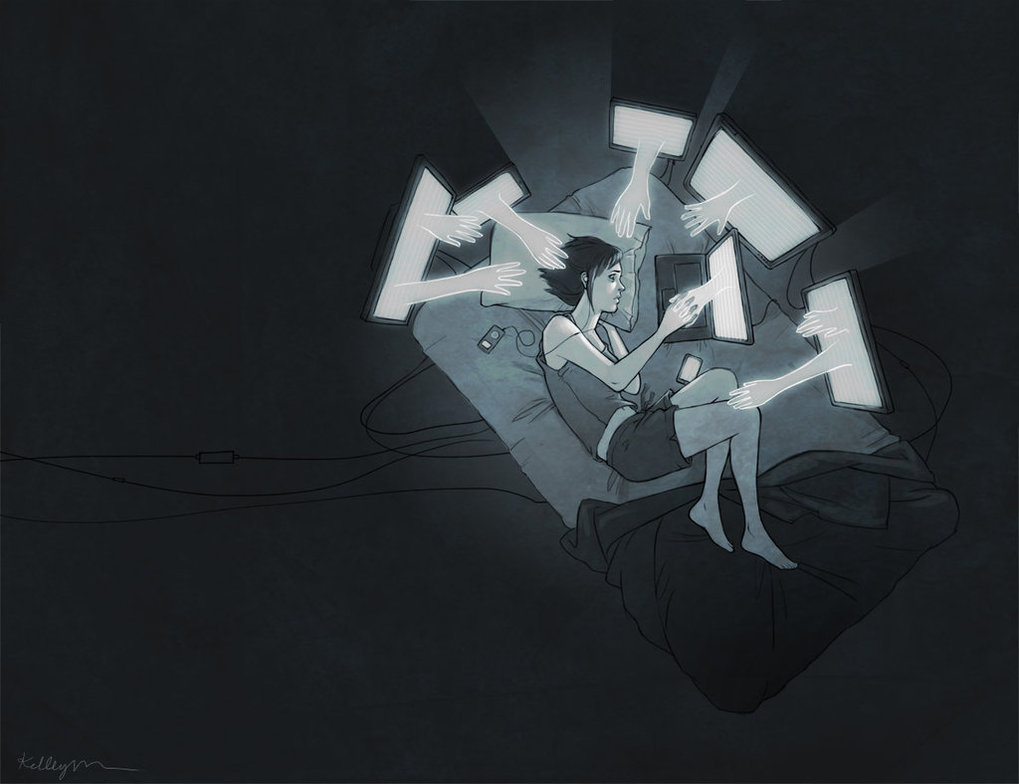
[/zl_mate_code] Source: noimnotluckyimblessedyes.tumblr.com
See more from this artist on her website.
3. David Schermann, Computer
Head
[zl_mate_code name=”Blue Dynamic” label=”2″ count=”1″ who=”div” text=”In a warm outdoor scene a man looks up toward the light, with an old computer monitor instead of a head.”]
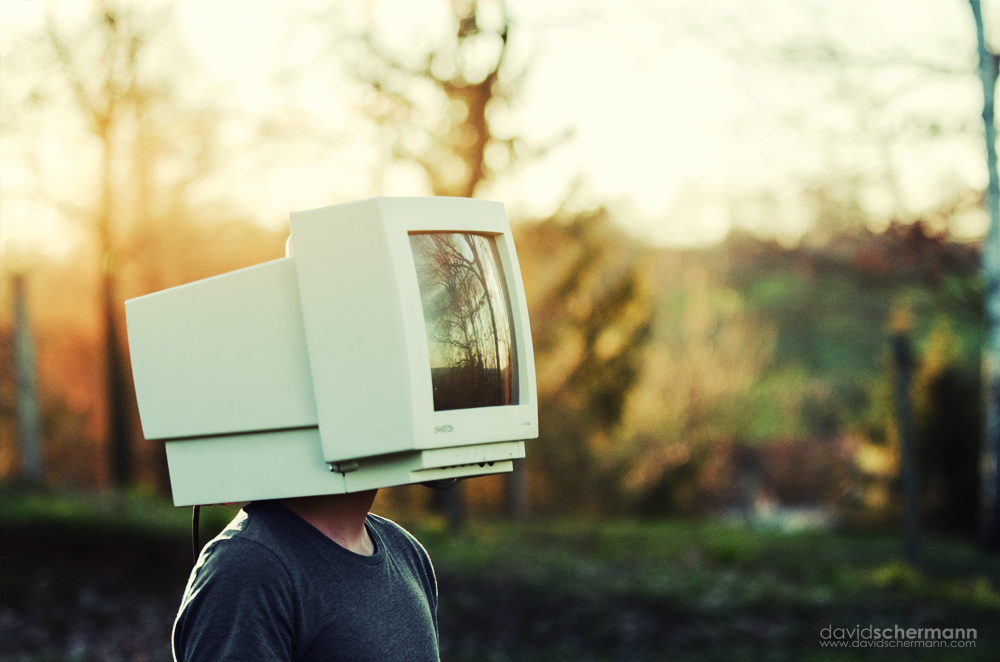
[/zl_mate_code] Source: Deviant Art
4. Jacques-Armand Cardon,
Untitled
[zl_mate_code name=”Orange Dynamic” label=”3″ count=”1″ who=”div” text=”The sphere-headed man can’t follow suit as he stands before a square hole in the wall.”]
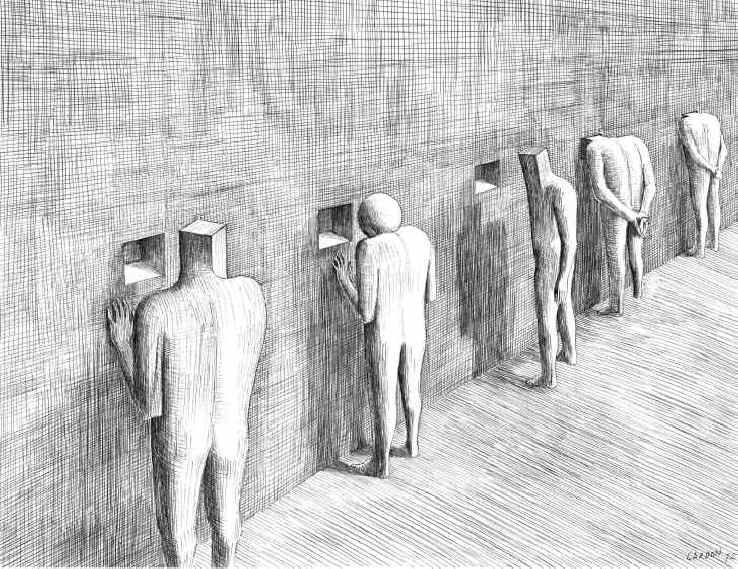
[/zl_mate_code] Source: workman.tumblr.com
5. Brian DeYoung, Insomnia
[zl_mate_code name=”Pink Dynamic” label=”1″ count=”1″ who=”div” text=”A woman with a plug on the back of her head sits crisscross on her bed, but the outlet on her pillow isn’t three-pronged.”]
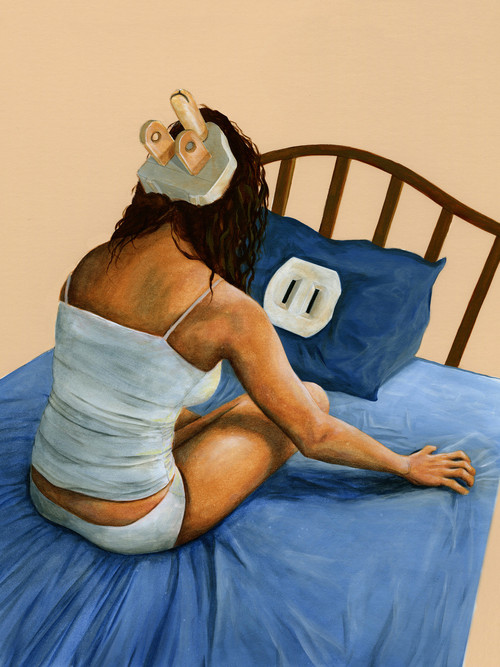
[/zl_mate_code] Source: anytimealways.tumblr.com
6. artist unknown
[zl_mate_code name=”Green Dynamic” label=”4″ count=”1″ who=”div” text=”Two giant fingers violently push a monitor through an empty-eyed open head and the mouth is vomiting brains.”]
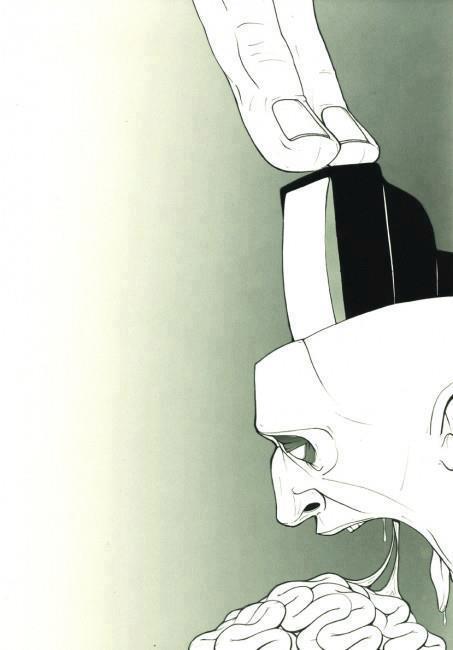
[/zl_mate_code] Source: bjorklund1.tumblr.com
If you know who created #5 & #6, please email me! Googling descriptions got me nowhere…
GD Star Rating
loading...
Apr 29, 2013 | sculpture
Kelly Campbell Berry brings stories to life by turning books into a visualization of what’s within them, creating characters that float before the very text that breathed imagined life into them in the first place. The books open and the centers of their pages are ripped out to create a stage for the dynamic jumbled scenes of collaged settings and characters, whose illustration styles match the style of writing within them. The Wizard of Oz is colorful and young, and The Tales of Shakespeare is reminiscent of the Renaissance and based in realsim. Gulliver’s Travels is the only closed book and the characters seep out of the sides of it like the cover’s illustration is leaking.
The best part about these book sculptures is that they’re for sale at Kelly’s Etsy shop for less than you’d expect, ranging from Arabian Nights at $150 to Peter Pan and Twenty Thousand Leagues Under The Sea at $200.
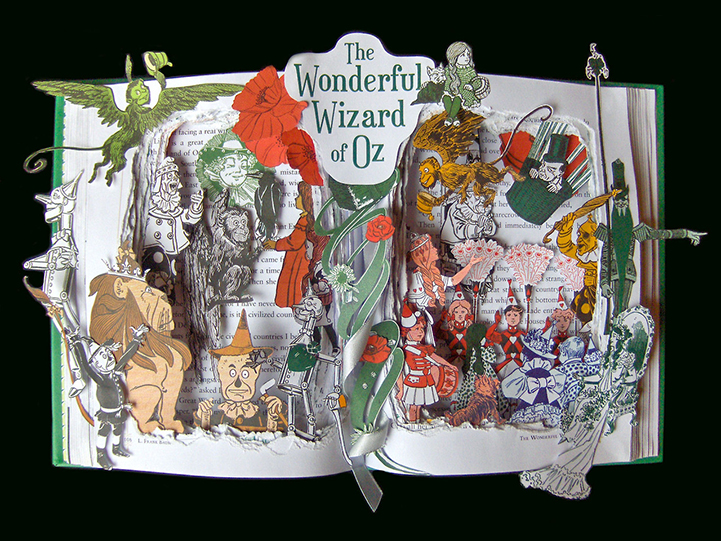
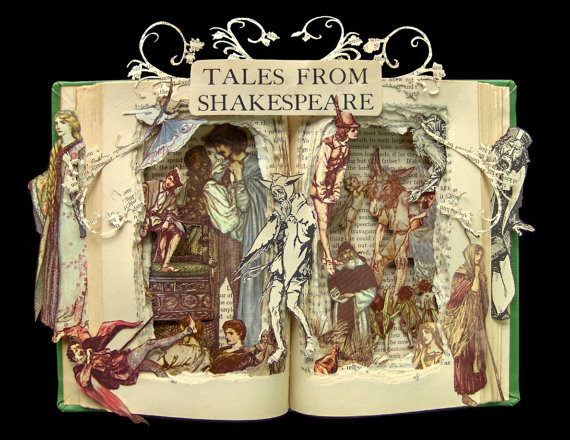
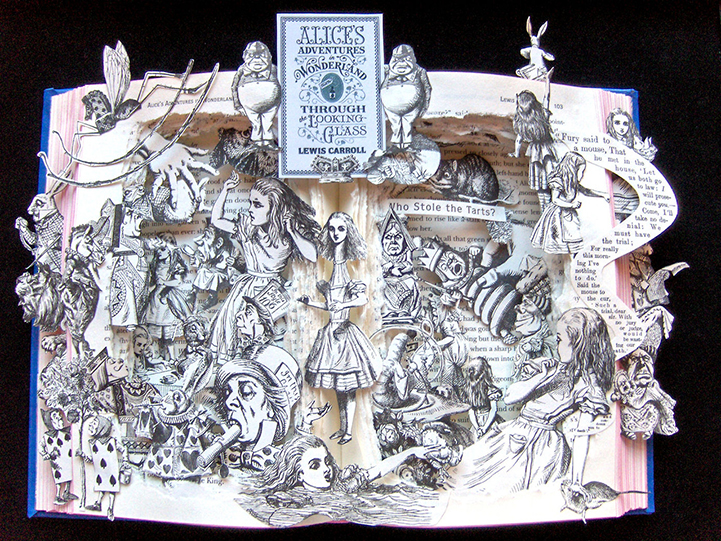
Kelly said,
“I am truly amazed at the ability some people have to arrange words in such a way that we, the readers, can actually ‘see’ into the imagined world of the writer. We relate, feel, and become invested in the characters so deeply that we are pulled into their world for a brief moment of escape. My book sculptures are my way of showing what the words on the pages create in the imagination of the readers.”
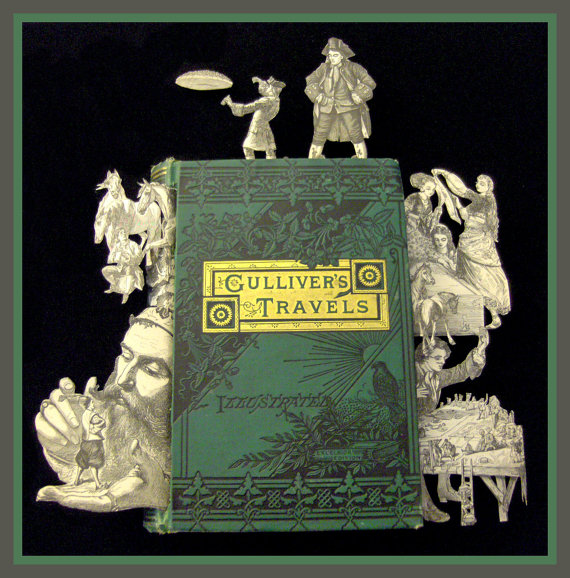
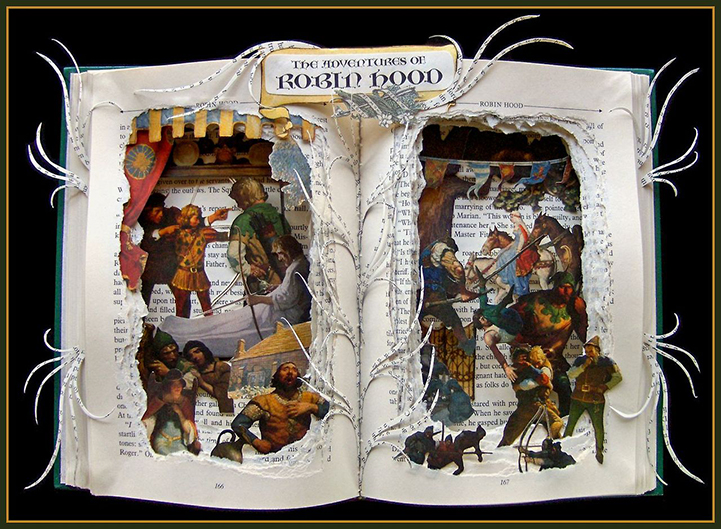
[zl_mate_code name=”twitter/facebook” label=”5″ count=”2″ link1=”http://www.twitter.com/share?url=https://thingsworthdescribing.com/2013/04/29/kelly-campbells-book-sculptures-bring-stories-to-life/” link2=”http://www.facebook.com/share.php?u=https://thingsworthdescribing.com/2013/04/29/kelly-campbells-book-sculptures-bring-stories-to-life/”]
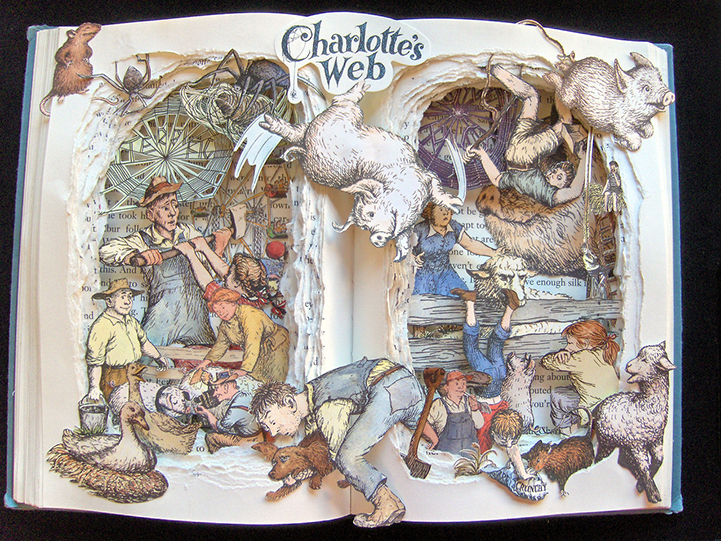
[/zl_mate_code]
See more from Kelly Campbell Berry on Etsy and on her Tumblr.
Source: My Modern Met
GD Star Rating
loading...






















